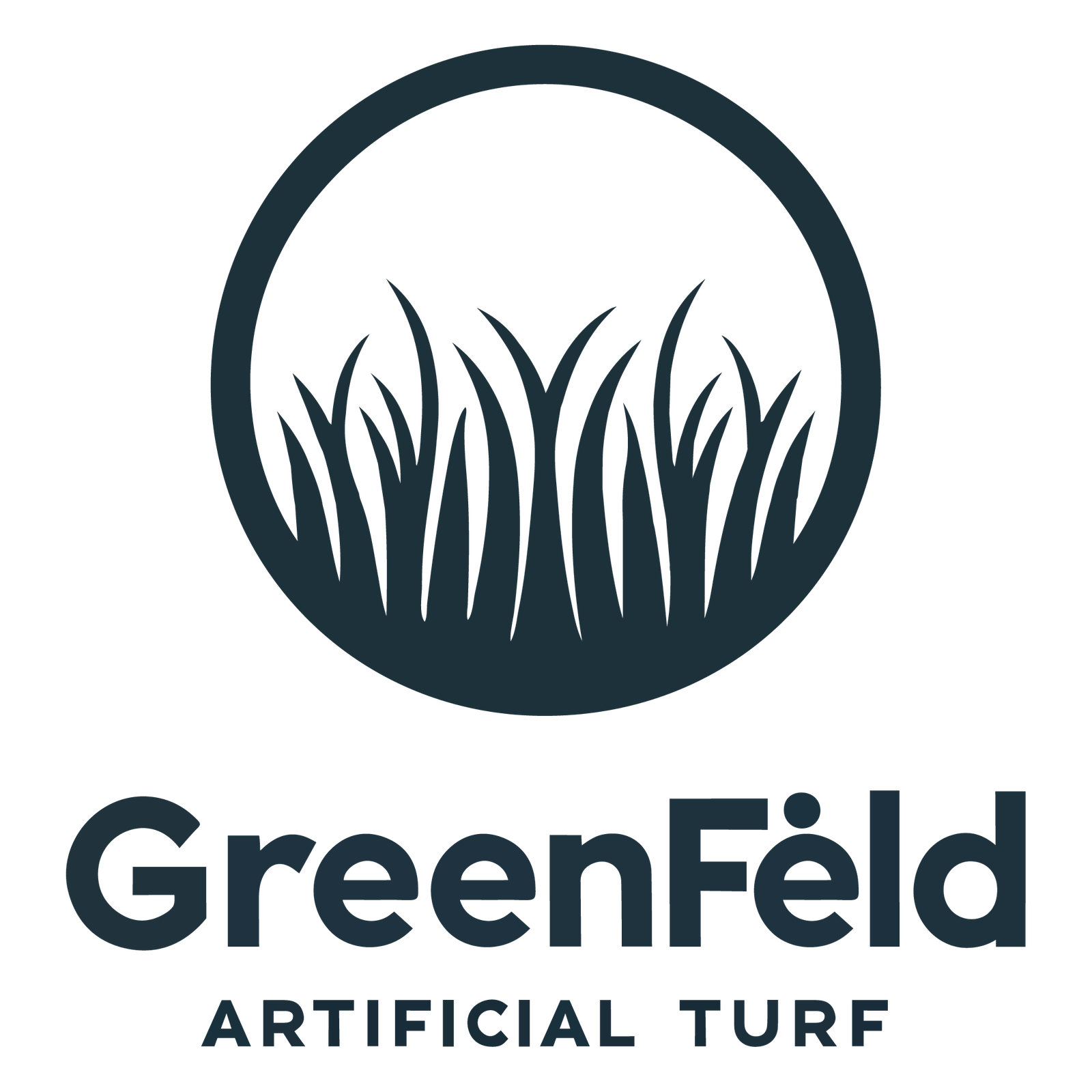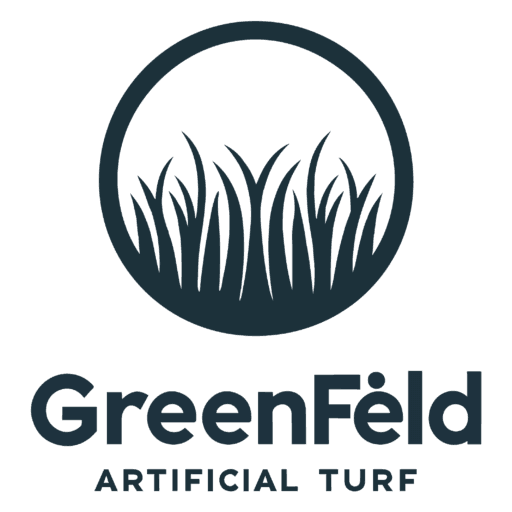You dream of lush green spaces but struggle with natural grass that's expensive and demanding. Imagine a solution that stays green, beautiful, and easy to manage year-round.
Different types of artificial grass include polyethylene, polypropylene, and nylon, each offering unique durability, softness, and aesthetic features suitable for various applications, climates, and budget considerations.
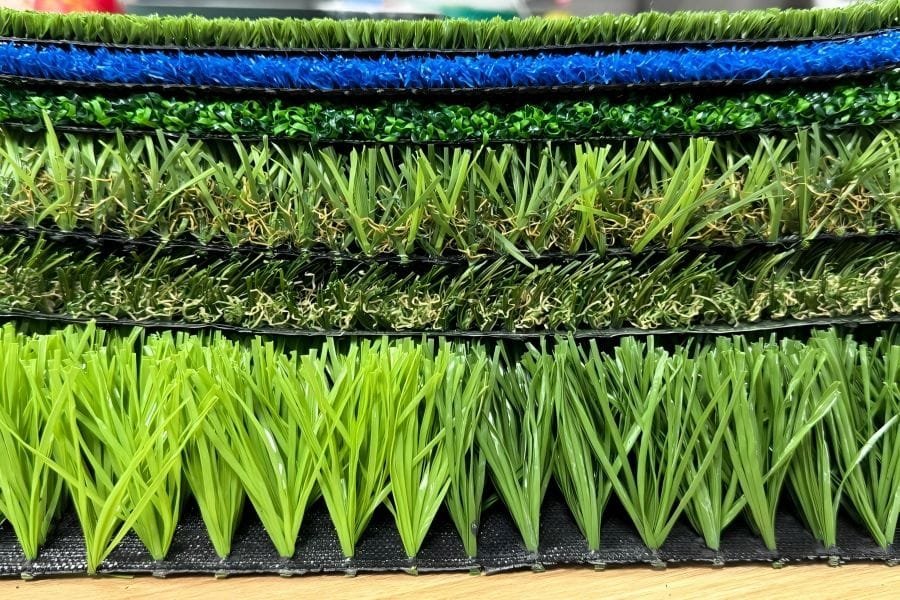
Different Types of Artificial Grass
Choosing the right artificial grass impacts durability, visual appeal, and maintenance ease, enhancing both customer satisfaction and property value. Let's explore these choices in detail.
Which material artificial grass is best?
Natural grass looks amazing, but maintaining it can be challenging, especially in extreme climates like Saudi Arabia, where water is scarce and expensive.
Polyethylene artificial grass is generally the best material because of its balanced softness, durability, UV resistance, and realistic appearance, making it ideal for landscaping and high-end recreational areas.
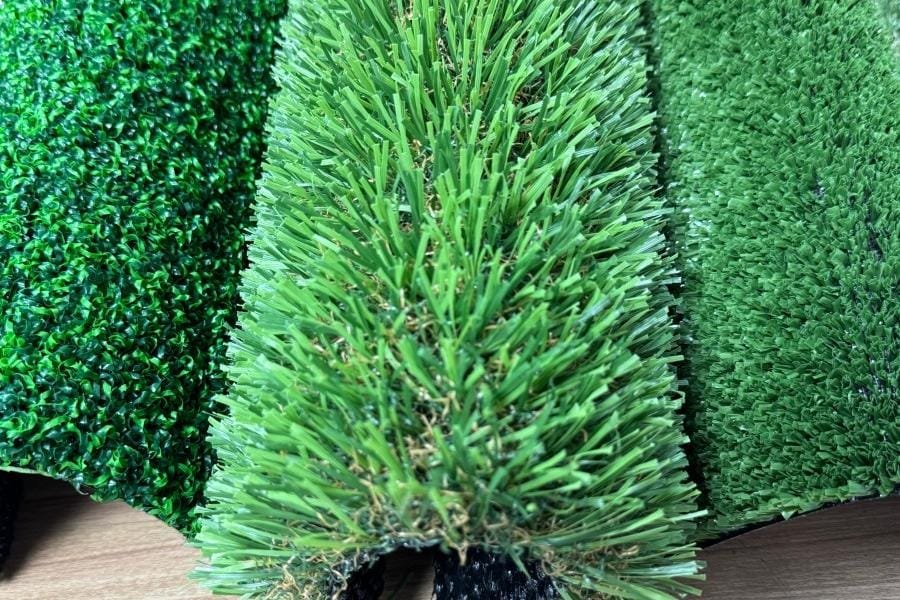
PE Material for Artificial Grass
Dive deeper into artificial grass materials
Selecting artificial grass material is essential for durability, comfort, and aesthetic appeal. Each material has specific strengths, suited to different applications and environments:
| Material | Durability | Softness | UV Resistance | Application |
|---|---|---|---|---|
| Polyethylene | High | High | Excellent | Landscaping, Gardens |
| Polypropylene | Moderate | Low | Good | Indoor use, Decoration |
| Nylon | Very High | Moderate | Excellent | High-traffic areas |
-
Polyethylene: This material closely resembles natural grass, is soft underfoot, and has outstanding UV resistance. It’s a top choice for hotel landscaping, poolside, and recreational spaces, providing guests with a comfortable experience. However, it’s slightly pricier compared to polypropylene.
-
Polypropylene: More budget-friendly, this material suits indoor or low-traffic areas. It’s lightweight, easy to handle, but not ideal for intense sun exposure or high-traffic zones because it wears down faster.
-
Nylon: This is the most durable artificial grass fiber, resisting heavy foot traffic and intense heat. It’s perfect for pathways, rooftop gardens, or entryways. Yet, nylon is slightly less comfortable due to stiffness, making it less suitable for relaxing or lounging areas.
Based on my experience with hotels and luxury resorts, polyethylene offers the best balance between durability, comfort, and visual quality.
What Are the Different Types of Artificial Turf Fibers?
You might find choosing artificial turf fibers confusing because they seem similar but differ greatly in performance. Making the wrong choice could compromise your hotel’s landscaping quality.
Artificial turf fibers include monofilament, slit-film, and texturized fibers. Monofilament fibers provide realistic appearance, slit-film fibers are durable for heavy use, and texturized fibers are ideal for filling gaps and enhancing stability.
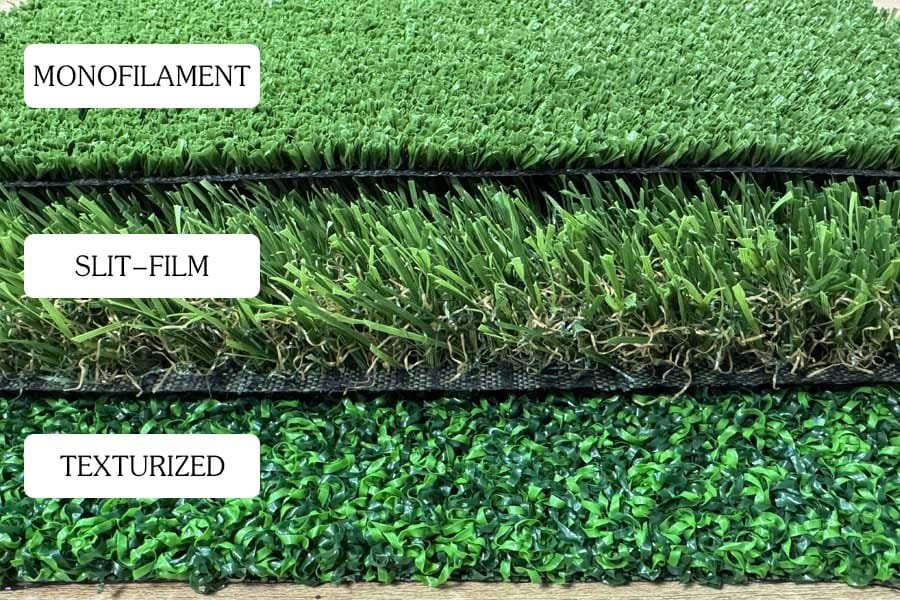
Types of Artificial Turf Fibers
Dive deeper into artificial turf fibers
Understanding artificial turf fibers helps you pick suitable options for different spaces within your hotels or resorts:
| Turf Fiber Type | Appearance | Durability | Best Use Scenario |
|---|---|---|---|
| Monofilament | Realistic | Moderate to High | Landscaping, pool areas, guest spaces |
| Slit-film | Less Natural | Very High | Sports facilities, high traffic paths |
| Texturized | Dense, curly | Moderate | Infill support, stability enhancement |
-
Monofilament Fibers: Designed as individual blades, monofilament grass closely replicates the appearance and feel of natural grass. Hotels typically prefer this fiber around pools, gardens, and guest relaxation areas because of its natural softness and luxurious look.
-
Slit-film Fibers: These are flat fibers cut into strips that create a stronger and denser surface. They're ideal for heavy-use spaces, such as playgrounds, sports facilities, or busy pathways. However, they look less realistic than monofilament fibers.
-
Texturized Fibers: Curled, dense, and short fibers used primarily as infill support. They add stability to artificial turf, helping to maintain the upright position of other fibers and enhancing comfort underfoot. Texturized fibers are often combined with monofilament or slit-film to achieve optimal turf performance.
For luxury hotels, I recommend combining monofilament fibers with texturized fibers. This blend ensures realistic aesthetics, comfortable feel, and sufficient strength for high-traffic recreational areas.
How can you tell if artificial grass is good quality?
Poor-quality artificial grass can disappoint guests, fade quickly, and increase replacement costs. Recognizing quality grass avoids unnecessary issues.
High-quality artificial grass features durable backing, uniform coloration, high stitch rate, UV resistance, realistic texture, and warranty coverage. Checking these factors ensures lasting performance and visual appeal.

Quality Artificial Grass Indicators
Dive deeper into assessing artificial grass quality
To accurately assess artificial grass quality, consider these key factors:
1. Backing Material
High-quality grass has strong, durable backing made from latex or polyurethane. Polyurethane backing is often preferred for its moisture resistance and stability, particularly in humid climates like poolside areas.
2. Stitch Rate and Density
Stitch rate measures how closely fibers are stitched together. High stitch rates increase density, durability, and lush appearance. Aim for grass with a stitch rate of at least 15,000 stitches per square meter for hotel landscapes.
| Stitch Rate | Density & Durability | Recommended Usage |
|---|---|---|
| Below 12,000 | Low Density, Low Durability | Decorative areas with minimal traffic |
| 12,000 - 18,000 | Moderate Density | Moderate traffic areas, leisure zones |
| Above 18,000 | High Density, High Durability | High-traffic spaces, premium landscaping |
3. Color and Texture Consistency
Quality artificial grass has consistent color and realistic texture resembling natural grass. Examine samples under natural lighting to identify potential fading or uneven coloring.
4. UV Resistance
Look for UV-resistant artificial grass to prevent discoloration and brittleness from prolonged sun exposure. This feature is critical for outdoor hotel areas exposed to direct sunlight year-round.
5. Warranty and Manufacturer Reputation
Reputable suppliers offer warranties of 8–10 years or more, reflecting confidence in their products' longevity. Always verify warranty details and consider the manufacturer's market reputation.
From my experience supplying luxury hotels, always prioritize durability, visual quality, and long-term value over initial cost savings. Investing in high-quality artificial grass enhances guest satisfaction, lowers maintenance costs, and ensures lasting appeal.
Conclusion
Understanding artificial grass materials, fibers, and quality indicators allows informed decisions, ensuring beautiful, durable landscaping tailored to hotel guest experiences and practical maintenance requirements.
